
44 minute read
Total SPorts Podcast is gaining popularity
TOTAL SPORTS QUINTE GOLDEN HAWKS In Good Hands with McDonald
By: Paul Svoboda Total Sports Quinte
Advertisement
John McDonald knows exactly where he’s coming from.
He’s just not exactly sure where he’s going next. Like a lot of us.
McDonald, 78, is the director of hockey operations for the Trenton Golden Hawks, a position he has held for the last nine years during which time the club has been among the top franchises in the OJHL. The Covid-19 pandemic led to the cancellation of the 2019-20 OJHL playoffs just when the G-Hawks were set to square off against their arch-rivals, the Wellington Dukes, and has left McDonald wondering what the future will hold for the league — and, hockey in general.
“It’s bothering me to be away from hockey,” said McDonald. “But, we’ve just got to keep going. We’ll wait for Hockey Canada to determine what we do and go from there.”
Communicating with fellow OJHL executives in May, McDonald said several potential re-start dates were being discussed, pending approval from Hockey Canada and contingent upon the provincial government lifting lockdown sanctions. Realistically, says McDonald, he doesn’t see the league resuming activity until the end of October.
Meanwhile, he says it will be “a whole different world out there” when junior hockey is allowed to resume. Most certainly, says McDonald, there will be financial hardships for OJHL teams, including the Golden Hawks.
“What was the economic impact of cancelling the series between Trenton and Wellington? Wow!” said McDonald. “That’s about $70,000 we lost. Probably more for Wellington. It’s a tough pill to swallow.”
When the OJHL is allowed to rebound, McDonald says it’ll be tough sledding for some clubs. “In Toronto, where attendance is not as important for GTA teams, where they’re asking kids to pay-as-you-play, some families are just not going to be able to afford it.”
When he arrived in Trenton 10 years ago, McDonald said he looked south to Wellington in an attempt to “pattern our franchise after the Dukes and the success they’ve had.” So far, so good.
But the post-Covid OJHL could present major obstacles on the road to success for all league teams. Still, McDonald believes the Golden Hawks will survive. And for that, he credits the town.
“People in Trenton have been just great to the team,” said McDonald. “You go back to those old Belleville and Trenton Bobcat Jr. B teams and remember what it was like at the rink. You’d go there and see the crowd and people cheering and the look on the kids’ faces. It’s the building of a relationship between the town and the team and that’s one of my highlights since being in Trenton. We’ve been blessed.
“The town understands what the town and team mean to each other. People can relate to the kids. We’ve got such great sponsors here. They all put their money where their mouths are.”
McDonald is also quick to praise the support of Trenton mayors, including the late John Williams and, now, Jim Harrison.
“John was a riot, a great guy,” said McDonald. “He would always tell us when we had a request, ‘just do it, we’ll worry about it later.’ Jim has been great too.”
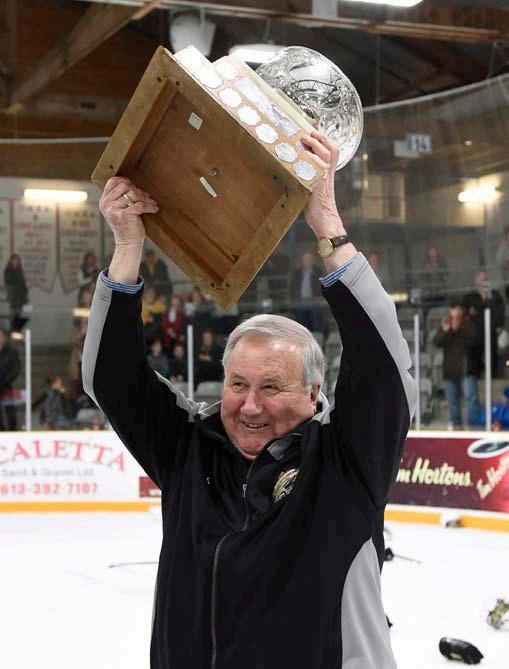
Photo by Andy Corneau OJHL Images
Photo by Tim Bates OJHL Images

Whenever the OJHL gets back on line, McDonald is making no promises about his future with the Golden Hawks. Except one.
“Once this gets going again, we could have one hell of a hockey team in Trenton,” he said. “I’m trying to retire, but it’s like that line from the Sopranos TV series — I just keep getting pulled back in.” And that’s not hard to do, for supporters of a man who has spent most of his life in hockey. Growing up in Pickering, McDonald’s father was a friend of former Toronto Maple Leafs Hall of Fame goaltender, Turk Broda.
“So,” said McDonald, “I was going to be a goaltender.”
TOTAL SPORTS QUINTE Total
Sports QUINTE PodCast

Tune in weekly for great interviews with sports celebrities and local clubs and athletes! Your local Sports PodCast Channel!
After stints in Jr. B and a “cup of coffee” with the Leafs at one of their pre-season training camps in Peterborough, McDonald eventually gravitated to coaching and discovered “I had a knack for it.”




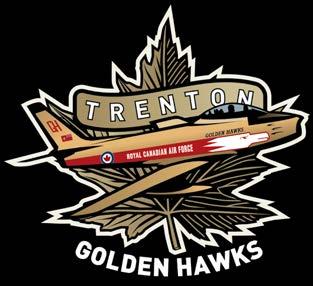
McDonald worked with the Streetsville Derbys, Markham Waxers and Aurora Tigers long before retiring from his regular job with Canadian Security Solutions and later moving to Trenton where, of course, he got hooked up with the G-Hawks. “I was at the rink one night and somebody spotted me and that’s the worst thing that could’ve happened,” said McDonald, laughing. He was back. And, loving it. “Hey, what makes a great coach is great players and I had some thoroughbreds,” said McDonald. “But, most of the time, I had a lot of Clydesdales. And I loved my Clydesdales.” So what keeps him coming back to the rink? “Hockey is what you put into it,” said McDonald. “It’s probably cost me a lot more money than I’ve ever made from it, but there are a lot of great memories. You meet a lot of great
QUINTE
In conversation with Cliff Thorburn World Champion Snooker Player and all around great guy. Also catch up with Joe Fee and the QuinteBayhawks Minor Lacrosse talking about the growth of lacrosse and the spring sign up. PodCast Now Streaming ... Subscribe on Apple Podcasts, iHeart Radio, Spotify or your favourite podcast app Total Sports Quinte Total Sports COVERING LOCAL SPORTS IN OUR COMMUNITY
QUINTE
Sports Development Guru Matt Young talking about how we can make sports better for our youth. Special guest Jack McFarlane of the Belleville Minor Hockey Association peewee Bulls House-league program. Now Streaming ... Subscribe on Apple Podcasts, iHeart Radio, Spotify or your favourite podcast app Total Sports Quinte Total Sports COVERING LOCAL SPORTS IN OUR COMMUNITY
QUINTE
In this episode guests James Boyd former coach of Belleville Bulls and current GM of OTTAWA 67s ... OHL draft talk and more ... Plus athlete of the week Liam Walsh Quinte track star committed to Memphis University in the NCAA Now Streaming ...
T o t a l S p o r t s
COVERING LOCAL SPORTS IN OUR COMMUNITY people. You meet a lot of great kids.”
NEED TO KNOW: McDonald is a former OJHL Coach of the
Year. He won the league’s Executive of the Year award in PodCast Subscribe on Apple Podcasts, iHeart Radio, Spotify or your favourite podcast app Total Sports Quinte
2016.
CHL VS. NCAA?

TSN’s Top Scout Says: “Do Your Homework” By Paul Svoboda Total Sports Quinte
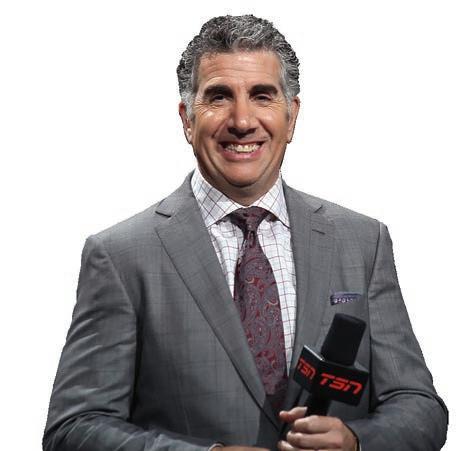
Hockey fans who follow Craig Button on TSN’s NHL broadcasts may not always agree with him, but there’s no way they can challenge his credentials.
Talk about bloodlines.
Button, 57, is the son of the late Jack Button, who created and first managed the NHL’s original Central Scouting Bureau. As TSN’s Director of Scouting, the younger Button knows his stuff. He was born for it.
After helping the Dallas Stars capture a Stanley Cup title in 1999, Button eventually left Texas — where he was the team’s scouting director — to become GM of the Calgary Flames. These days, he travels North America — and Europe — scouting for TSN, where he shares his wealth of hockey knowledge with NHL fans.
With the 2020 OHL draft completed, including the selection of several Quinte AAA Red Devils graduates, Button recently spoke to Total Sports Quinte about the options offered by major junior leagues to young players — and their families — compared to alternatives available through NCAA U.S. college programs.
“Two things are paramount,” said Button. “Number one, to understand what the development path looks like for you as an individual player. Most players need more time, not less. That’s a fact. There are players who are so good that going to the OHL at 16 seems to be a path that serves their development best. But for the majority, the vast majority will need more time. Understanding your own path, maturation, what it looks like — that is number one.
“Number two, evaluate what each option offers you. What does Option OHL offer you? What does Option NCAA offer you? You can evaluate what you are able to and what may be best suited to you.” Button allows that the NCAA offers more freedom of choice than the Canadian Hockey League (CHL), which is the governing body of the Western Hockey League, Quebec Major Junior Hockey League and OHL. In most cases concerning U.S. college offers, players can negotiate with more than one school whereas the CHL’s individual drafts mean a player’s rights automatically become property of one team only. That said, CHL draft picks can still shoulder a certain amount of leverage.
“As a development situation, one of the beautiful things about NCAA is you get to pick where you want to go,” said Button. “I tell parents if you don’t want to go someplace, be up front about it. Just say, ‘I want to go here, to the OHL, but I am not coming to your team.’ There is nowhere that says because you were drafted by so-and-so, that you are obligated to go there. If you don’t think it’s a good situation, don’t consider it.”
Players must also determine how serious they are about education, said Button, a situation that for junior prospects several years ago was far less important than it is in most cases today.
“If you’re not a good student, then you don’t want to be a student-athlete and the NCAA is not good for you,” said Button. “If you’re interested in studies, though, it doesn’t mean the CHL can’t offer you education too. It’s about understanding the demands of each. How can you grow and develop? Who are the people involved?”
Button bristles when people try to tell him that only one route — either the CHL or the NCAA — offers the ideal package for a young player seeking the ultimate in hockey development. One direction is not necessarily better or worse than the other, he says.
“I will say this to my dying day,” said Button. “If anyone tells you one path is better, run for the hills. There is nothing that says one is better than the other. There is only one thing I will guarantee, though, and that is not doing your investigative work is a mistake and that will hurt you.”
Today, more than ever, parents need to be fully engaged when deciding where is the best destination for their young hockey prospect, said Button.
“If an organization is unscrupulous, that is up to you to investigate,” he said. “That is incumbent on parents and I can’t emphasize this enough. I say this to parents: Would you, if your 15-year-old came home and said they were going away up north, 200 kilometres away, not ask who they were going with? Just a bunch of buddies? Who is supervising? Would you as a parent do that? No way. But when it comes to hockey, we let our kids go. That’s a mistake by parents.
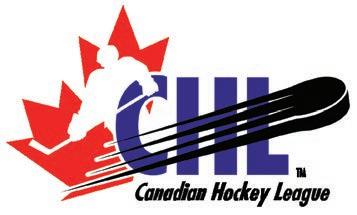

“Again, you have to have an environment where you are maturing and developing, not just physically but emotionally and mentally too. Being comfortable and confident.”

Sometimes, said Button, not sending your child anywhere is a viable option too. Some minor midget CHL draft choices will benefit from staying home to play major midget for one season before tackling the rigours of major junior hockey, he says.
“It drives me crazy when I hear that so-and-so doesn’t have anything more to prove, it’s too bad that they have to go back (to AAA minor hockey),” he said. “There is always something you can learn. If you’re going from midget to play junior, keep this in mind, the next levels are very demanding and if you’re not ready, you’ll get chewed up and spit out. Be ready. Prepare yourself. You might score 50 goals — so what? Have you been a captain? Are you mature enough to handle a different role?”
NCAA proponents argue that the U.S. college system of fewer regular season games (34) and more practices is of greater benefit to the development of young players. Those who are pro-CHL, say playing a 68-game regular season schedule provides a much faster route to development with more competition and pressure situations.
Button stops short of suggesting one system is stronger than the other in terms of individual player development, but hints that a balance between games and practices is preferable. It’s also something extremely difficult to achieve in the CHL, due to the economics of operating a major junior franchise.
“You don’t get revenue from practices,” said Button. “So how do you change the longstanding economic model? When I hear the argument about the 68 games, I shoot it down. I watch games all across the continent and of those 68 games teams play, 24 are garbage.”
For that, Button blames the sometimes onerous travel schedules to which CHL teams are forced to adhere. Especially 3-in-3 weekends, he says, with a team playing three road games in less than three days.
“The 3-in-3, you travel six hours to get there, you’re trying to manage the risk of injuries, you’re just trying to get through that (last) game,” said Button. “Sunday afternoons, because of the weekend schedule. Some leagues have tried to reduce games, but anyone who says you’re playing 68 games, well, 24 of those games are garbage.”
Again, says Button, there’s no easy answer. And each individual player, and his parents, must decide what type of balance will work best for them.
“There is no perfect organization,” said Button. “Not everybody is perfect. You’re going to have people take advantage. NCAA schools take advantage by putting players on a ‘practice squad.’ You’re not going to travel with the team. It works both ways.”
• BY THE NUMBERS: Last season, nearly 50 per cent of all players on active NHL rosters at the start of the campaign hailed from CHL franchises. The number of NHL players who had gone through NCAA programs was 33 per cent.
• LEADERS OF THE PACK: In a story that appeared in The Hockey News in 2019, it was revealed that players from the London Knights had played in more NHL games since the 2005 lockout than any other CHL franchise. Among NCAA programs, the University of Wisconsin was No. 1.
• BOTTOM LINE: Less than 5 per cent of all players competing at the elite levels of amateur hockey — CHL or NCAA — ever crack an NHL roster.
QUINTE Total Sports

COVERING LOCAL SPORTS IN OUR COMMUNITY Now Streaming ... Craig Button TSN Head Scout discusses CHL vs NCAA opportunities as well as the development path for hockey players. Special guest Cooper Matthews of the Quinte Red Devils Minor Midget Team.
Total Sports Quinte PodCast
Check out our full interview with Craig Button on our Total Sports Quinte Podcast. Available at Apple Podcasts, Heart Radio, Spotify or your favourite Podcast App! Link is also available on our website at TotalSportsQuinte.ca
QUINTE ROYALS Provincial Title in 2019 Gives Locals Hope for the Future
By Paul Svoboda Total Sports Quinte

Although he’s a minor baseball coach, Chris Lisle wasn’t playing much pitch-and-catch with his players this spring when opening day was beckoning for the 2020 EOBA season.
Instead, he was playing the waiting game.
“Yes, just like everybody else,” said the president of the Quinte Royals Baseball Association. “We had a full summer planned, but we’re waiting like everybody else right now.”
The Covid-19 pandemic had thrown a nasty curveball into the Royals’ 2020 season, along with every other organization in the EOBA. Minor sports across the country were on hold as lockdowns were put in place in an attempt to contain the spread of Covid-19, leading to isolation and personal-distancing procedures. And, no sports.
“The provincial and municipal governments will determine when we can start and we obviously trust them,” said Lisle. “We’ve already cancelled two tournaments in June but we’re hanging on to July for now.”
Lisle is hopeful the gradual reopening of the economy, and sports in Ontario, would include minor baseball by the middle of the summer. But, when he spoke to Total Sports Quinte, all bets were off until further notice.
“Hey, we want to get back for sure, but it has to be safe,” said Lisle. “The last thing we would want is to have a child or a parent or a player or a coach get sick.”
So, until the Royals and the rest of their EOBA counterparts get the green light to resume some form of competitive baseball, Lisle and his supporters will wait it out. He’s not even sure what a restart will look like, if and when it arrives this year.
“It will be interesting to see,” said Lisle. “We’ve already had discussions on how many balls would be put in play for a game. Spacing of players. The preparation and sanitization of the equipment. That kind of thing. Things like this will have to be the major topics of consideration.” the game might lend itself to an earlier restart than some other sports.
“Hey, we’re not exactly tackling each other out there,” he said.
Meanwhile, Lisle and the rest of the Royals organization look hopefully to the future. In 2019, a major highlight was an allOntario 13U A OBA championship captured by an upstart Royals peewee squad that simply refused to lose. Lisle still isn’t tired of talking about that.
“Yes, we had a wicked little peewee team win Provincials last year,” said Lisle. “We beat the South Bend Bears from Ottawa 10-0 in the deciding game in Trenton. It was a fantastic game.”
The victory was especially sweet, said Lisle, since the locals “were slaughtered” 16-6 in their first encounter with South Bend. Coached by Mark Abrams, the peewee Royals quickly regained their composure and completed the Labour Day Weekend championship tournament with six wins in seven games and Quinte’s first-ever OBA crown in its 20-year history.
After the tournament, Abrams spoke highly of his troops during an interview with Quinte Broadcasting.
“As you can imagine, we had some heads hanging after that first loss,” said Abrams. “But we told the kids to be proud. We had a little blip. To be a champion, we told them you sometimes had to reassess your situation. And that’s exactly what they did. They just decided to bear down and they went out and got it.
“The boys played hard and it all came together at the right time.”
Lisle said the provincial peewee title is a testament to the talent of local baseball players and coaches available in the Quinte region, along with a solid group of committed volunteers without whom the association would be unable to operate.
“The Royals have been around for 20 years now and we run baseball for kids from eight to 18,” said Lisle. “We’re pretty much a Highway 401 league, like the local minor hockey teams. Our teams play about 24 games a season, plus tournaments and the EOBA championships which decide who represents at the OBA championships on Labour Day Weekend.”

Chris Lisle
Although the Royals play out of centres much smaller than most others in the EOBA, they are a truly regional club, drawing players from six municipalities in the area.
“We’re small compared to most of the other larger centres we play but we have a very committed group,” said Lisle. “We’re pretty competitive. We’ve been known to surprise the odd team. We have some really awesome people helping us do this. A lot of good kids have gone through the system and, now, some of them are coming back to help coach.
“We’d hate to ever see this drop off due to a lack of volunteers. They are the key.”
That won’t happen, as long as Lisle and his supporters have anything to say about it.
As for what might be next on the horizon for the Royals organization, Lisle said there has been some discussion about a junior or even senior team in the future. The last senior team to play locally in the EOBA were the Belleville Labatt Nationals in the 1990s.

“There’s been some talk about a junior team in recent years as our numbers have improved,” said Lisle. “We have kids who are coming out of the system at 18 and asking where they can play next. We’re on the right track.”
Commitment at the playing and coaching levels would be imperative to any prospective plans about forming a junior team or resurrecting a senior club in Belleville and the Quinte region, said Lisle. Along with budgetary concerns.
Right now, he just hopes the traditional sounds of baseball can soon be heard again in diamonds around the area.
“Hey, on any given day during our season you can see kids playing baseball in Tyendinaga, Wellington, Belleville,” said Lisle. “Kids have a lot of choice these days when it comes to playing sports and we hope to continue to offer them a good experience with the Royals.”
• THE LINEUP: The roster of the 2019 OBA champion Quinte Royals 13U baseball team included Ripken Shaver, Deacon Ellis, Connor Sherman, Matthew McGuinness, Ty McCambridge, Josh Mathew, Eric Abrams, Jared Langdon, Caleb Martin, Kaiden Insley, Nolan Donnelly and Carson Campbell. On the coaching staff were Mark Abrams, Tony McCambridge, Dave Cleary and Nicole Martin (manager).
Photos by Amy Deroche DerocheSportsPhotography.com

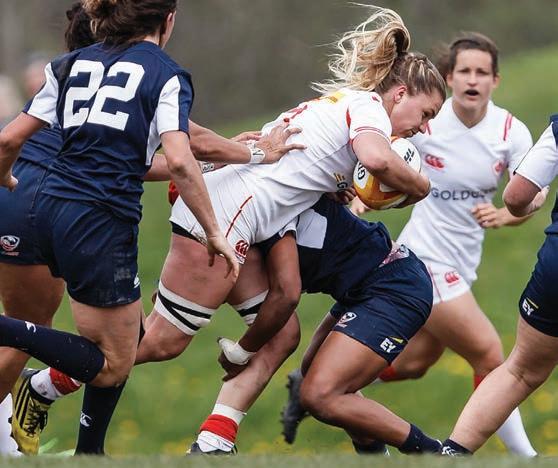


TOTAL SPORTS QUINTE 16 17 TOTAL SPORTS QUINTE
DELIBERATE PRACTICE Athlete of the month
By: Jeremy Benoit/ Belleville Senators Hockey Sara Svoboda: Local Rugger on a Roll By: Total Sports Quinte Staff
After reviewing a few journal entries on athletic performance that you practice perfectly to optimize your ceiling for that and practice I wanted to find a way to explain why the small particular task. Remember time spent on a task is not a good Sara Svoboda, 25, is a graduate of Centennial Secondary School tasks we do in the gym (ping pong, tossing games, balance and indicator of task development. Set specific and deliberate goals and McMaster University. She started her rugby career at CSS proprioceptive exercises, hip and shoulder prehab exercises) are when practicing and time should be an afterthought. and with the Belleville Bulldogs and has represented Canada nine extremely important to athletic development. I have outlined times with the senior women’s National Team. She is currently 3 important points to think about when it comes to deliberate practice and developing as a pro. Jeremy Benoit
BSc. Kinesiology C.S.C.S
working on a Masters Degree in Sports and Exercise Psychology at Loughborough University in England. Always Challenge Yourself to Improve: To improve performance one shouldn’t continuously practice and master tasks they are
Head Strength and Conditioning Coach
Belleville Senators Hockey Club Svoboda recently took a timeout to participate in a Q and A session with Total Sports Quinte. already proficient in. Always try and go outside your comfort zone and turn weaknesses into strengths by setting small goals or TSQ: Which coaches most influenced your athletic career? tasks that are geared to improve these short comings. Processing during in game situations for example can be improved upon by playing small challenging games such as ping pong or multi directional drills with cued change of direction. SS: “Rob Terry was my soccer coach for the Belleville Comets from U8-U18, which really speaks to how passionate he was about the sport. A lot of what he instilled in us stuck with me and translated well to rugby. Shaun Allen coached my sisters (Katie and Tia) and TSQ: Worst rugby memory to date? SS: “Narrowly missing out on a trip to Nationals in 2018 in Alberta in my final year at McMaster.” The Brain is a Muscle too: We perform all kinds of different tasks in a day and are always learning new skills they trigger a certain electrical pattern, when we continuously practice these tasks we increase the myelination of those particular axons which over time increase the speed and strength of those electrical patterns. These skills learned have been proven to increase the ability to process in their particular sport. Whether this be through reading, performing difficult movement patterns in the gym or learning knew exercises that aren’t usually in your warm up routine. Quality Over Quantity of Practice: Whether it be improving on hip stability, mobility, quick feet or lifting techniques. It is imperative me at McMaster and is an awesome person and great coach. He taught me so much about the tactical side of rugby and created a really competitive environment in training. He also helped us develop leadership skills by taking a step back at game time and letting the players run the show.” TSQ: What attracted you to rugby? SS: “I loved soccer and hockey growing up but the high speed combined with physicality of rugby was unlike any sport I’d played before. My uncle and dad also played a high level of rugby so my sisters and I were eager to give it a try, first in the Bulldogs Touch League and then full tackle in Grade 9.” TSQ: Advice for young rugby players with National Team aspirations? SS: “Get your hands on a ball — as much as possible. Watch rugby. It isn’t a sport a lot of Canadians grow up playing, so we’re at a bit of a disadvantage when it comes to experience on the international stage. Develop strong ball skills, study the best players at your position to accumulate ‘mental reps’ so when you try a skill yourself, your brain already recognizes the pattern.” TSQ: Career interests beyond rugby? Sponsorships & Foursomes Availabl e DON"T MISS OUT! TSQ: How do you train away from the field? SS: “Any team I’ve played for has had a great strength and conditioning staff so I’ve had plenty of support lifting weights at school and home. I ran cross-country in high school which helps me be able to challenge myself with workouts on track or trail.” TSQ: What are your strengths as a rugby player? SS: “Conditioning, being able to cover a lot of the field on attack and defence, support. My fitness has allowed me to fill that role well.” SS: “Working with athletes competing at various levels to enhance their performance and improve their preparation to ultimately get the most from their sporting experience.”
QUICK HITS
Favourite food: “My mom’s turkey dinner.” Favourite cheat food: Dairy Queen. Favourite musician: Bryan Adams. Favourite movie: Titanic and Jaws (tie). Best place visited: Paris.
Three people, alive or dead, to have lunch with:
“My grandfather John Svoboda, who I never met (he died in TSQ: Where do you most need to improve? 1989), Clara Hughes and Will Ferrel.” SS: “Tactical awareness. Canada, like most countries, is developing F R I D A Y O a k A U G U S T 1 4 , 2 0 2 0 H i l l s G o l f C l u b a more structural style of play — getting in the right places, creating the best ‘shape.’ You can never watch enough video or study the game enough to become more aware of on-field positioning.” P r o c e e d s t o s u p p o r t q u a l i t y h e a l t h c a r e a t T r e n t o n M e m o r i a l H o s p i t a l TSQ: Where has women’s rugby improved the most since you Foursome : $ 900 18 Holes W /Cart started playing? Hole in Lunch and Dinner , Registration Gift One Contests , Chances for Fabulous Prizes , SS: “Game knowledge. We’re really fortunate to have access to analysts and some pretty cool technology at training camps and on tours, such as drones, that allow us to get instant feedback and Closest to the Keg Contest , First Aid - MASH Tent , a view of all phases. It helps in game preparation.” Putting Contest and So Much More ! TSQ: Best rugby memory to date? SS: “Winning the OUA championship my first year at McMaster, F O R R E G I S T R A T I O N 6 1 3 - 3 9 2 - 2 5 4 0 A N D S P O N S O R S H I P E X T 5 4 0 1 O R I N F O @ O P P O R T U N I T I E S , C O N T A C T T M H F O U N D A T I O N . C O M : on home soil, and getting silver at Nationals in Guelph. In the spring, we also captured the National Sevens title in B.C., so it was a pretty awesome first year.”
ELITE JUNIOR FOOTBALL LEAGUE
Welcomes Skyhawks to the Fold
By: Paul Svoboda Total Sports Quinte
Jim Pankovich isn’t sure how the 2020 season will unfold for the Canadian Junior Football League.

But, one thing he knows for sure is that the Quinte Skyhawks will be part of the season-opening kick-off for the 2021 CJFL campaign. While the Covid-19 pandemic has thrown a wrench into the CJFL’s plans for 2020, Pankovich, the league commissioner working out of Edmonton, is already looking ahead to 2021. Several weeks ago, the Skyhawks were approved for a CJFL expansion franchise to begin play next year.
The Skyhawks already operate local minor and U16-18 competitive programs out of MAS Park. They’ll now take a giant leap into the top junior football league in Canada.
“The Skyhawks submitted a proposal, it’s a good organization with a solid track record and business plan, and we understand they have support from the municipality,” said Pankovich. “Our Ontario representative helped them work on their proposal and, ultimately, to get approved.”
The CJFL currently includes 18 teams, six in each of three divisions — the Ontario Conference, the Prairie Conference and the B.C. Conference. Quinte will join the Ontario Conference along with existing franchises in London, Windsor, Hamilton, the GTA, Ottawa and Niagara Region.
The Skyhawks could soon be joined by other new entries from Ontario, said Pankovich.
“We’d like to see about 10 teams in Ontario, which we think is doable,” he said. “Some other Ontario communities and organizations have expressed interest and some, like Quinte, already have minor football programs in place. Some, like Quinte, are looking to supplement their minor programs with a junior program.”
Joining the CJFL is a tall order for the Skyhawks. The league is regarded as the elite national circuit for Canadian athletes not playing football at the USports or NCAA levels.
“We’re nationally recognized as a high performance program,” said Pankovich. “We’re somewhere between top-level high school football and USports. Some of our top teams are comparable to USports teams, but in reality we’re one step below because our athletes tend to be a little bit younger.”
Athletes from the ages of 17-22 are eligible to play in the CJFL. Some are students, some are not.
“We don’t limit our athletes,” said Pankovich. “Whether they are in school or have an occupation, they’re eligible to play.” Pankovich says some CJFL players attend community college or are involved in apprenticeship programs while extending their football careers in the league. Others play one or two seasons, then will try their luck at the USports level if they qualify academically for university studies.
Like the former OHL Belleville Bulls, Pankovich said future Skyhawks players in the CJFL could come from anywhere in Ontario — or, beyond. Also like junior hockey, billet families are an integral part of the league.
“Quinte will absolutely be a regional team,” said Pankovich. “Some of our model franchises in B.C. really appeal to their communities but also draw from other areas. Most of our players come from a 100-kilometre radius of where their team is. Some players will need to stay with billet families, or at residence if they’re studying at community college.”
The CJFL features teams in large urban centres, like the GTA, Hamilton and London. But it also includes clubs in smaller markets such as Nanaimo, Chilliwack and Langley, B.C.
“We believe that’s a strength of our league,” said Pankovic. “The smaller market teams really become a part of their community. They become embedded members of the community and can really get into a lot of community sponsorship opportunities.
“That’s how a lot of our clubs operate.”
CJFL franchises must be not-for-profit organizations, said Pankovich, and most play in facilities that are owned and operated by their municipality. There are minimum standards for league playing fields and the Skyhawks have already approached City Hall in Belleville, receiving a favourable reception to their requests for upgrades at MAS 2 Field like permanent stands, a press box, change facilities and other amenities.
“Minimum standards are expected and we’ve provided a list to Quinte,” said Pankovich. “We understand there is a partnership between the city and the organization. I’ve talked to a lot of mayors about these things and there are resources and grants available.
“We understand these things don’t happen overnight, and most of our stadiums are nice and cozy.”
As for what local gridiron fans can expect when the Skyhawks make their debut in the CJFL in 2021, Pankovich believes they’ll be impressed. “It’s very competitive and anything can happen,” he said. “Ideally, we believe our games take place in a good environment with good competition and fans leave feeling they’ve enjoyed a good experience.”
They might even see a future pro in action. Seven former CJFL players were selected in the 2020 CFL draft while the 2019 Grey Cup MVP, Winnipeg Blue Bombers running back Andrew Harris, is a CJFL graduate.
“Our goal is not to produce professional athletes,” said Pankovich. “But some have gone on and done quite well. Like Andrew Harris.” No Limits Football Club 100 Station St. Belleville, ON 613.813.2156
Calling all former Dukes players or Bulls players that want to participate! Please contact us ASAP.


BULLS ALUMNI VS DUKES ALUMNI January 30th 2021 Wellington Lehigh Arena 111 Belleville St, Wellington, ON
Welcome back
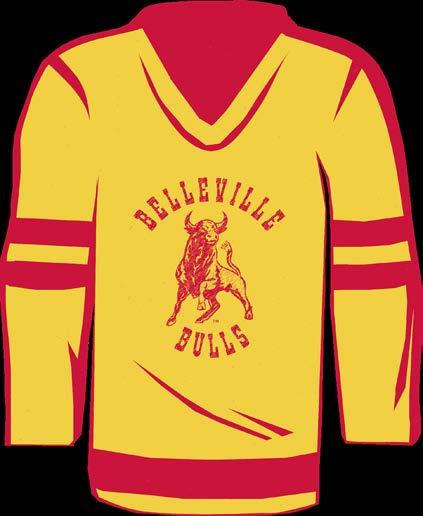
Game time 6:00 PM Licensed Reception to follow Highland Hall at the Lehigh Arena Live Band Jersey Auction TICKETS Adult $20 Advance /$25 At the door Seniors & Students $15 Kids 12 and under $10
Please call Kelly Martin in our Marketing Dept at 905-914-7454 or visit WellingtonDukes.ca to register. Click on Alumni Registration.

Blast from the past Proceeds to Honour Dr. R.L.Vaughan with donations to Camp Trillium and Dukes Scholarship Fund.
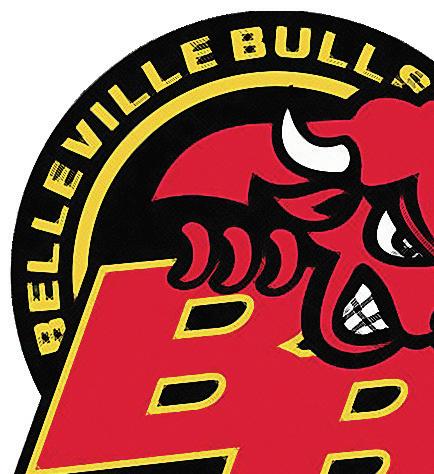
THE FUTURE GYM Social Distancing & the 2-Metre Rule
By: Terry Boyd - The GYM Trenton
I have been asked several times over the past few weeks what can be expected when gym’s re-open, it’s a good question. It is a question with no absolute answer. Given that every gym is different from the next, be it equipment, location, community population or membership make-up every gym has it’s unique set of circumstances that require it to be fluid and able to change as information about COVID-19 ebbs and flows. I’ll tackle a few of the basic questions that all gyms will inevitably have to answer.
The basic premise behind social distancing is a 2-metre rule, this is due to expiration of droplets from breathing which enables the virus to spread from one person to another. New information contradicts previous information that the virus is easily transferred from surfaces, in fact it is harder to transfer from a surface as previously stated. So, where does that leave us? There are several Provinces, States and Countries all with stages of “re-opening” ranging from 3-5 stages and sometimes more. Typically Gym’s are lumped in with recreational facilities, nightclubs and arenas where people are in close proximity to each other. The amount of people able to congregate also varies from place to place and stage to stage (see what I mean about being fluid). For the foreseeable future Gyms will have to be able to accommodate the 2 metre rule and depending on the area and stage requirement- limited numbers.
The 2 metre rule is easier in a set environment, however when people are exercising and breathing heavier than the norm, other measures will have to be in place. Face masks or a cloth face covering is becoming mandatory for some businesses and companies and is strongly recommended by the Centers for Disease Control and Prevention. Facemasks in a gym brings to mind a lot of questions; is my breathing compromised (hypoxia), will I get sick, or dizzy- the answer is yes and… no (again being fluid). The volume of oxygen remains the same in the air you are breathing in through the mask, however the amount of air can be compromised. For the average healthy person this means you should monitor yourself for dizziness, light-headedness, numbness or shortness of breath. You can expect to get tired more quickly, but similar to an oxygen deprivation mask you will get used to it. However, if you have underlying respiratory conditions a face mask or covering is not a good idea. Always seek medical advice before exercising, always a prudent measure especially with these conditions. Then what would you do? A lot of gyms are going to barriers between cardio machines, which could be a good answer that is easy to assemble or disassemble without compromising the integrity of the equipment while providing maximum safety for the member
The future gym will have to accommodate the laws and policies of the local, provincial and federal governments relying heavily on the cooperation of the membership for patience and understanding as each specific gym changes with requirements. I think the only sure thing in all of this, is that gyms will never be the same. There is a standard of 10 written and unwritten set of rules that are all encompassing and even more relevant now more than ever.
1. 2. 3.
4. 5.
6. 7.
8. 9.
10.
11. Put everything back where it belongs. Don’t hog the equipment. Wipe things down after use – (more important now) with an approved hard-surface sanitizer ( Canada.ca). Always ask if someone’s is using equipment before taking over. Be mindful of your surroundings- in particular 2 metre rule plus. Bring a towel, take it with you. Be discreet with selfies – tracking progress is one thing, posing for insta or FB- quite another. Respect personal space – no brainer. Socially people like to congregate and chat at the gymunfortunately most gyms will have time slots or scheduled times for groups- at least for the time being. Be mindful that someone is waiting to workout too. Keep the equipment where it belongs- don’t drag an aerobic step into the weight pit and do your old school version of step aerobics to “Swamp Thing” playing on your headphones. Ok – I added another one – if someone is wearing headphones/ ear buds, leave them alone, there is a reason for it.
At the end of the day the new gym will have plastic barriers, mask requirements, temperature taking, time slots, specific days, less classes, outdoor options, sanitizer stations, no cash policies- some will be over the top, some not enough, but this is the “new normal” (I hate that term). One thing is for sure- it will never be the same experience, but for those who know and feel fitness in their lives, whether weightlifters, cardio junkies, yogis, or whatever your fitness vice may be, you’ll find a way. One thing that this pandemic has taught us, we need fitness not just for our physical lives but our mental health.

The GYM 421 Dundas St. Trenton 613-392-1825
BAYHAWKS LACROSSE Future of Lacrosse in Quinte Looks Bright
By: Joe Fee Quinte Bayhawks Lacrosse
Lacrosse is Canada’s national summer sport and the Quinte Minor Lacrosse Association was formed in 2019 to provide all youth from the ages 3-16 (and later 3-21) with the opportunity to learn and play the sport locally.
Over the last 15 years, lacrosse has consistently been among the fastest growing sports in North America. In Belleville and the Quinte region, lacrosse has been played for many years, however, it has not been able to ‘stick around’ for various reasons. With a renewed effort, the organizers and volunteers of the QMLA aim to change that by providing a fun, active and safe environment for boys and girls to learn and enjoy the sport.
Historically, Belleville lacrosse teams have come home as Ontario champions at least five times: 1972, ‘73, ’75, ’78 and ’82, plus participated in the peewee Nationals in 1973. In our inaugural 2019 season, the peewee Quinte Bayhawks were finalists in their division at the Ontario championships, which is a testament to the talent and potential that already exists in the area.
Lacrosse can be played in two forms — box or field — and both are very popular.
Box lacrosse is played in a hockey rink once the ice comes out in the spring, or on artificial turf surfaces placed over the ice during winter months. Box lacrosse is an option for players aspiring to play at the professional level in the National Lacrosse League, featuring teams from all over North America — including the Toronto Rock.
Field lacrosse, played outdoors on a football-sized grass or artificial turf field, is very popular as a varsity sport at secondary and postsecondary schools. Currently, field lacrosse is played at Eastside S.S. in Belleville, with interest growing at other local high schools as well as various schools across Ontario.
Field lacrosse is growing at the college and university level across Canada and has always been an extremely popular sport on the NCAA stage in the U.S., where many Ontario players have gone on to enjoy very successful careers while completing their educations. There are also opportunities to play field lacrosse professionally in the Major Lacrosse League and Premier Lacrosse League, both based in the U.S.
The QMLA currently offers box lacrosse, but is aiming to introduce
a field lacrosse program in the fall. Players will have the option to play box or field — or both. Either way, players can develop the essential lacrosse skills common to both forms and follow a path that suits them best.
With a focus on development at the younger ages, the QMLA hopes to ensure that the future of lacrosse in Quinte is a bright one with continued success and sustainability. Children as young as three can participate in our learn-to-play program and at age five can progress to a modified 3-on-3 crossfloor program, much the same as minor hockey has implemented in recent years.
By offering both recreational and competitive streams, the QMLA ensures that all players glean the most enjoyment from the sport, depending on what level of commitment and development they seek. A girlsonly lacrosse program is also an option from ages 11 and up, with an increasing number of females playing the game across Ontario and strong local girls-only programs already existing in Kingston and Tyendinaga.
Also, you may soon see lacrosse instructors and/ or professionals providing in-school programs locally to introduce the sport and its history to students of all ages.

Photos Provided by Joe Action Photography

With the current uncertainty surrounding the 2020 box lacrosse season due to the Covid-19 pandemic, the QMLA is looking forward to the fall and 2021 season to regain momentum and continue to grow the sport in the Quinte region.


A Parent’s Guide to Buying High-end Hockey Sticks
By: Joey Walsh HockeyStickMan.ca
It is important for parents to know that the desired hockey sticks of today are made of high-quality expensive materials. The primary purpose of this is creating lightweight sticks with unbelievable performance capabilities, whereas heavier, less expensive sticks are typically much more durable. It is entirely understandable that your son/daughter would want a high-quality stick but making smart decisions about buying is key to keeping your hockey stick budget under control! Below is a quick snapshot of what parents and players should know;

1. Basic Sizing | Sticks are conveniently broken down into size classifications such as Youth, Junior, Intermediate, and Senior. As they progress, the flex rating increases, and the shaft and blade get bigger accordingly. Start by looking at sticks with a flex rating of approx. half your child’s body weight, then make sure it is tall enough to reach his/her nose when standing flat footed without skates. If you do not buy within the correct size parameters you will not be getting the top end performance that you have paid for, regardless of the overall quality or how recent the stick is. However, one size does not fit all, players that are taller, play frequently, and / or like taking slap shots might find a slightly stiffer flex to be beneficial whereas shorter players and / or kids that take more quick release shots may opt for a flex rating a little below half their body weight.
2. Quality | The difference between a performance stick and discount models will make a bigger impact than you might think. I have heard from hundreds of people that are shocked at how much of an impact a high-quality stick had on their game. Here are some key pre-ice identifiers of a quality hockey stick:
The Feel | Most brands will have three different price points on similar looking sticks. The difference is the materials used and the weight. Typically the lighter the stick the higher the quality, but even more important is that the weight is evenly distributed (lower end sticks tend to have heavy blades and are therefore bottom heavy), and it should feel light and responsive to hold (heavier sticks are generally full of resin and therefore do not perform as well).
The Specifications| True One-Piece construction with 100% carbon fiber and an overall weight of less than 430 Grams in SR/INT and 400 in JR is ideal for performance driven purchases. This isn’t always something that you will be able to tell by picking up a stick, so it is important to do your research beforehand.
3. Pattern | Choosing the correct curve is so much easier than it ever used to be. Though lots of pros use custom curves, there are only a few different options at the retail level now; they come with a standard lie angle, and all brands offer roughly the same curves. What’s important is that you find the curve you think is best for your game and stick to it. I have used the same curve for 20 years and it just so happens to be by far the most popular pattern in hockey now at every level from Pro, College, to Junior and in stores. If you’re not sure I always recommend the Blade 1 Pattern (Bauer P92, CCM P29, True TC2, Warrior W03). If you find that your kid’s shots are getting up too high you may want to try what we call Blade 2 (Bauer P88, CCM P80, True MC, Warrior W88). For the danglers of the world, our Blade 6 (Bauer P28, CCM P28, True TC4, Warrior W28) has emerged as a popular option for those focused on stickhandling.
4. The Stick | Once you know the correct size, quality and pattern for you then it is time to select a stick. In the first few years of hockey it won’t make a lot of difference. They must learn the game and how to shoot before they can really get much of a performance boost from any stick, no matter the price point. Many of your sons and daughters will be influenced by what the top players in the NHL or what other kids on their team are using. Being a father myself I understand the urge to buy exactly what they want, and although its often expensive, a top-quality stick that will likely last them the whole year may be worth it. If they aren’t picky about the make and model, you can often find a high-end stick on sale that is a year or two older This is usually a great option as the technology doesn’t change massively year to year and as long as they are stored properly, sticks do not suffer at all by sitting on the shelf. The biggest issue is that as kids grow stronger, they begin to break their sticks more often, which parents, Junior, College and even pro teams can find difficult to pay for. At this point, many parents start to look for solutions that still meet the first three criteria outlined, but perhaps with more flexibility on different makes and models. In fact, as players make it onto higher level teams that supply sticks for them, there are often limitations on what they can use until the time they make it to the NHL.
For more in depth information on hockey sticks you can visit the University section of our website at hockeystickman.com or check out some of the options that we recommend at our all new Canadian site at hockeystickman.ca.
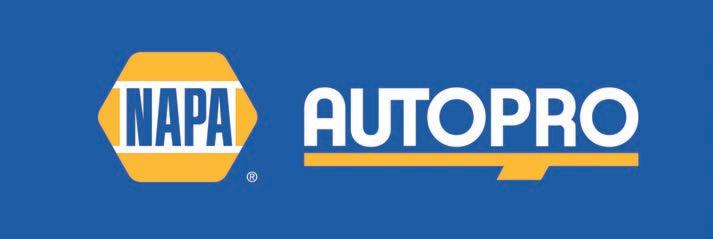
AUTO REPAIRS AND DIAGNOSTICS CAR MAINTENANCE WARRANTIES EMERGENCY ROADSIDE ASSISTANCE

We are open and ready to serve you!
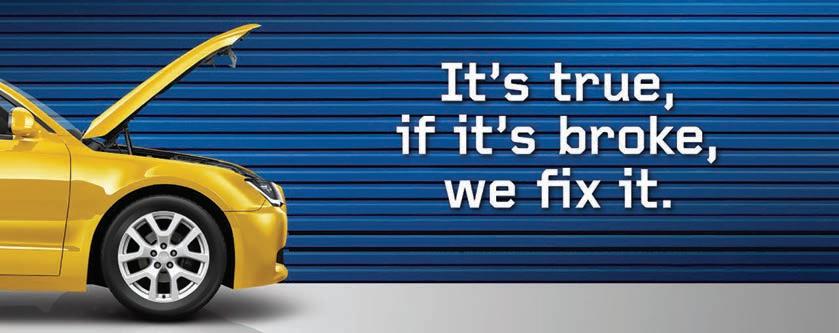
COVID-19 RELATED MEASURES AT YOUR LOCAL NAPA AUTOPRO
With the COVID-19 situation continuing to evolve daily, we as business operators must adapt our ways of doing things and modify some of our usual habits in order to ensure everyone’s safety and limit the possible spread of the virus.
Here are the measures that we continuously strive to implement:
• Our technicians always wear neoprene or latex gloves when they enter your vehicle. • Our technicians disinfect high-touch interior surfaces when receiving and returning your vehicle: steering wheel, door handle, gear changer, etc. Reception areas, counters, payment terminals, courtesy vehicles, and common areas are regularly disinfected. Hand sanitizer is available for use. If you have traveled abroad in the past 2 weeks, we ask that you refrain from visiting our shops and schedule an appointment after the prescribed quarantine period of 14 days. Anyone with flu-like symptoms is also requested not to come in person to our automotive repair shops.




